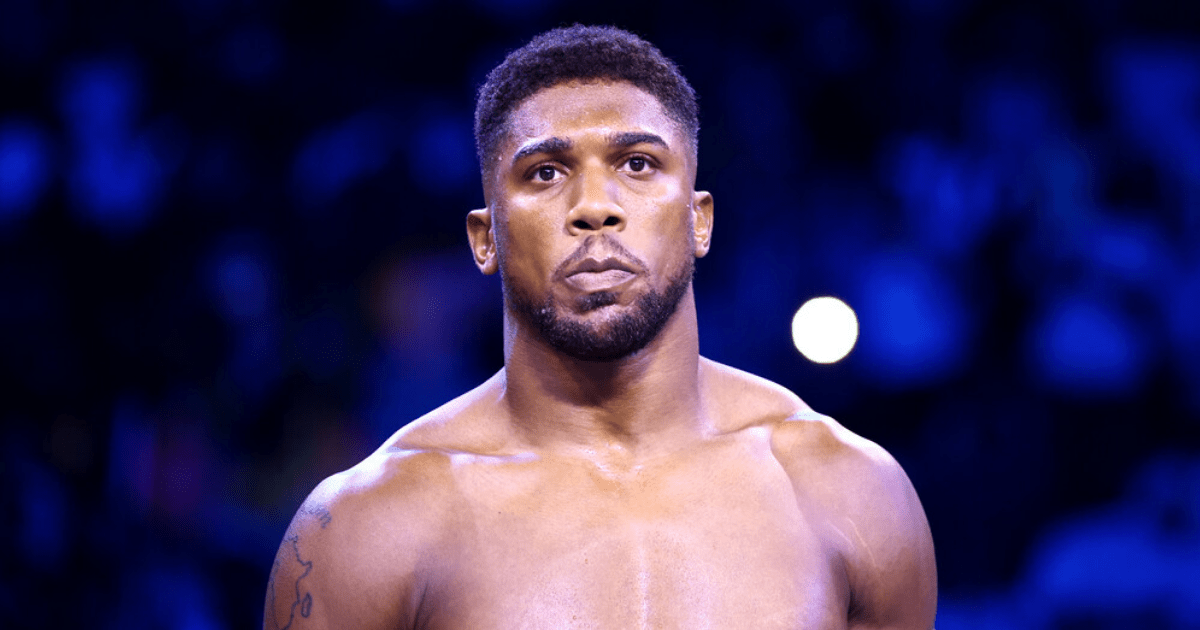ANTHONY JOSHUA is reportedly in talks to face Tyson Fury’s former opponent Otto Wallin.
The Brit, 32, suffered a second defeat in a row and third of his professional career back in August when Oleksandr Usyk defeated him in their rematch in Saudi Arabia.
Joshua is expected to return to the ring in December
Wallin’s only defeat in 25 professional bouts came against Fury
Joshua’s loss left him without any world heavyweight title belts as Usyk retained his IBF, WBA and WBO straps, while Fury holds the WBC.
Yet despite his poor bargaining position, AJ was surprisingly offered the chance to fight Fury in an all-British clash on December 3.
Joshua agreed to a 60/40 split in favour of The Gypsy King, but negotiations then broke down after Fury set a deadline for the fight to be signed.
When it wasn’t, he declared he was moving on to other opponents.
Fury now appears set to take on Derek Chisora in a trilogy bout in Cardiff on December 3.
Meanwhile, Wallin, who lost to Fury by unanimous decision in September 2019, has claimed his team have been contacted by Joshua’s representatives ahead of a potential clash.
Speaking to iDBoxing, the Swedish heavyweight, 31, said: “They’ve been in touch, Dmitry [Salita] and Eddie Hearn have talked about it.
“I don’t know what the latest is now, but I know they’ve spoken before about it and I think Dmitry was told that they were going to wait for the Fury and Joshua negotiations.
“I haven’t got any update lately, but I would love that fight, that would be really good for me I think and I know Joshua pretty well, he knows me and that would be a good fight.”
Joshua’s expected return date is December 17 as he searches for a first win in two years.
He has lost three of his last five fights – with wins against Andy Ruiz Jr and Kubrat Pulev coming among defeats to Ruiz and Usyk twice.
Wallin has a record of 24 wins and one defeat – with that blemish coming against Fury.
His best victories have come against the likes of Travis Kauffman and Dominic Breazeale.
 Fury is closing in on a bout with Chisora on December 3
Fury is closing in on a bout with Chisora on December 3
Frequently Asked Questions
How can a beginner start boxing at home?
Boxing has been around since ancient times. Boxing was developed in ancient times to train warriors for fighting against foes. Boxing is still widely practised today. You don’t need to go to the gym to box. To box, all you need are a pair gloves and punching bags.
There are many local amateur boxing groups that you can join to train with professionals. After mastering basic punches, combinations, and other skills, you can compete in tournaments.
How to throw a jab
This guide will show you how to throw a jab.
- Get up with both feet.
- Lift your arm up above your shoulder.
- Your target is at your feet.
- After hitting your target, raise your arm upwards.
- Steps 1 through 4 can be repeated.
How long does it take to learn boxing?
Boxing can be learned in 3 months. This includes learning the basics like footwork, balance, and stance. Boxing isn’t just about throwing punches. You need to learn how you can block and dodge attacks.
Statistics
- It is just like normal sparring with a partner, but you want to throw punches at 75% of your normal speed. (wikihow.com)
- You want to be running at roughly 75-80% of your top speed..5 mile slow, easy recovery jog at the end.[6]X Research source 2Mix in long runs, shadow boxing, and short sprints on non-interval days. (wikihow.com)
External Links
expertboxing.com
boxandflow.com
How To
These are the basics of boxing
How to box effectively
Boxing is one the most well-known sports in the world. It is made up of two competitors who aim to knock the head off each other. Different countries have different rules. In general, there are three types of boxing; Amateur, Professional and Olympic boxing.
Amateur boxing is usually practiced at school, college or university. This boxing style includes sparring sessions without protection, using padded gloves. Usually amateur boxing competitions consist of three rounds of five minutes each. There are many styles to amateur boxing like Kickboxing. Muay Thai. Taekwondo. Karate. Judo. Wrestling.
Boxing is often practiced in gyms or clubs. They have protective equipment such as mouthpieces. Professional boxing competitions have six rounds that last four minutes each. There are many styles of professional boxing: Boxing, MMA (Mixed Martial Arts), Kickboxing and Muay Thai.
Olympic boxing is done at the Olympics. International standards dictate that boxers must wear protective gear. The competition lasts eight rounds of three minutes each. Olympic boxing is limited to two styles: Light Flyweight and Heavyweight.
The basics of boxing are:
- Techniques for punching
- Guarding techniques
- Footwork
- Stance
- Movement of the body
- Defense
- Combination
- Rotation
- Spare parts
Punching Techniques
There are seven types: Left Hook (right hook), Right Hook (uppercut), Cross (cross), Straight, Overhand, Underhand. Each punch is unique. Some punches are more powerful than others. For example, an uppercut requires great force. On the other hand, a straight punch requires less power but it is faster than other punches.
There are also many combinations. These are combinations made up of several punches that can be used together to achieve one goal. An entire combination could have several parts. For example, a left hook followed by a right cross will cause damage to the opponent’s jaw.
Guard Techniques
To defend himself from being attacked, a boxer uses his entire body. He does this by using his legs, arms, elbows, hands, knees and feet.
Legs
Boxers should use their legs to defend against kicks. He raises his leg when he is hit with a kick and then moves away from the opponent. If the attacker is coming from the front, he will bend at the knees to avoid getting kicked on either side. However, if the attack comes from behind, he stands up straight and blocks the kick with his foot.
Elbows
Because elbow strikes inflict a lot of pain, they are very effective. You can either deliver an elbow strike directly, or indirectly. Directly refers to hitting your opponent with the forearm, while indirect means you hit him using another part of your arms.
Hands
Boxers use their hands to block incoming blows. To do so, they raise their fists above their head and move them towards the direction of the attack. The attacker’s fist is then in their face.
Knees
When receiving a blow to the stomach, abdomen or chest, a boxer should bend his knees to absorb the impact. Knee strikes can be used to defend yourself.
Feet
If he is being attacked, a boxer must take a step back and counter-attack. This allows him to put distance between himself, his opponent, and the ring. In addition, when delivering a counter-attack, a boxer should keep his balance.
Stances
To box effectively, a boxer must establish a stance. The way he defends himself will be determined by his stance. It dictates how he places his body and faces his opponent. There are many stances available to boxers. These are some of our most favorite:
- Low stance
- High stance
- Southpaw stance
- Western stance
Body Movement
To win a fight, a fighter must move around the opponent. This involves changing positions, speed, rhythm and timing.
Rotation
When a boxer throws a punch, he rotates in order to increase the reach of his arm. The rotation is done at different speeds depending on the type of punch.
Combinations
The timing of each punch determines the effectiveness of a combination. A good combination starts with a strong punch and ends with a weak one.
Spares
Sparring is an exercise session to improve boxing skills. Sparring is a training session that helps a boxer train his mind and body. In conclusion, the purpose of sparring is to learn how to fight and not get hurt.
To sum it all, boxing requires patience and dedication. To be a better boxer you need to train hard.

